Mountain biking has become an increasingly popular activity for those looking to get outside and enjoy the great outdoors. But for those new to the sport, getting the right size mountain bike can be a challenge. Choosing the wrong size can cause discomfort, restrict your range of motion, and even lead to injury. In this comprehensive guide, I will take a closer look at what size mountain bike you need and why it matters. We’ll cover everything from measuring yourself to understanding bike geometry, so you can confidently choose the right size bike for your needs. Whether you’re a beginner or an experienced rider, this guide will help you make the best choice for an enjoyable and safe mountain biking experience.
What size mountain bike do i need?
When it comes to choosing a mountain bike, the size is crucial for a comfortable and enjoyable ride. To determine the right size, I recommend considering your height, leg inseam, and the bike’s geometry. You can use a mountain bike size chart or calculator to get a general estimate. However, it’s always best to test ride the bike and get a professional fitting before making a purchase. Keep in mind that factors such as riding style, terrain, and suspension type can also affect bike size selection. [1][2]
Understanding Bike Measurements
Understanding bike measurements can be overwhelming, but it’s an essential step in finding the right size mountain bike. Different brands and models may use different sizing conventions, which can be measured in centimeters or inches. Road bike frames are typically measured based on the seat tube length, while mountain bike frames are measured from the seat tube to the crank. It’s important to consider factors such as standover height, reach, and stack when choosing a size. Additionally, bike fit can be adjusted through handlebar and stem length, and saddle height. Ultimately, finding the right size bike is crucial for a comfortable and enjoyable riding experience. [3][4]
Definition of bike measurements and how they are taken
Bike measurements can be confusing and overwhelming, but understanding them is crucial in choosing the right size mountain bike. There are various measurements to consider such as standover height, reach, stack, top tube length, and seat tube length. Standover height is the distance between the ground and the top tube, and reach is the horizontal distance between the head tube and the seat post. Stack is the vertical distance between the bottom bracket and the top of the head tube. Seat tube length is the distance between the bottom bracket and the top of the seat post. These measurements are typically taken in centimeters or inches and can vary depending on the bike’s brand and model. [5][6]

Explanation of the differences between various measurements (e.g. standover height, reach, stack, etc.)
When it comes to choosing the right size mountain bike, understanding the different measurements is key. Standover height refers to the distance between the ground and the top tube of the bike, which is important for ensuring you can comfortably straddle the bike. Reach is the distance between the handlebars and the saddle, affecting how stretched out or upright you feel while riding. Stack measures the height of the bike’s frame, affecting how tall or short it sits. These measurements, along with others, will vary between brands and models, so it’s important to consult size charts and potentially seek professional fitting advice. [7][8]
Factors Affecting Bike Size Selection
When it comes to choosing the right size bike, there are a few key factors to consider. Firstly, your height and weight play a big role in determining the size frame you need. However, riding style and terrain are also important to consider. Different types of mountain bike riding require different frame sizes for optimal performance. Additionally, bike frame geometry and material can affect sizing as well. Whether you’re a beginner or an experienced rider, it’s important to take all of these factors into consideration when choosing the right size bike for you. [9][10]

Rider height and weight
When choosing the right size mountain bike, it’s important to consider your height and weight. As a rider who is on the taller or heavier side, you may want to size up to ensure that the bike frame can support your weight and provide enough clearance for your legs on the pedals and the ground. On the other hand, if you are smaller or lighter, sizing down may be necessary to achieve a comfortable fit and avoid reaching too far to the handlebars. Ultimately, finding the right size bike for your body type is crucial for a safe and enjoyable mountain biking experience. [11][12]
Riding style and terrain
When it comes to choosing the right size mountain bike for me, my riding style and terrain play a big role. If I prefer technical, steep descents, a smaller and more agile bike may be better suited for me. However, if I enjoy long cross-country rides, a larger bike with a more stable geometry may be a better fit. It’s important to consider the type of terrain I most frequently ride and select a bike that can handle it well. Ultimately, finding a bike that fits me properly and complements my riding style will make for a more enjoyable and safe experience on the trails. [13][14]
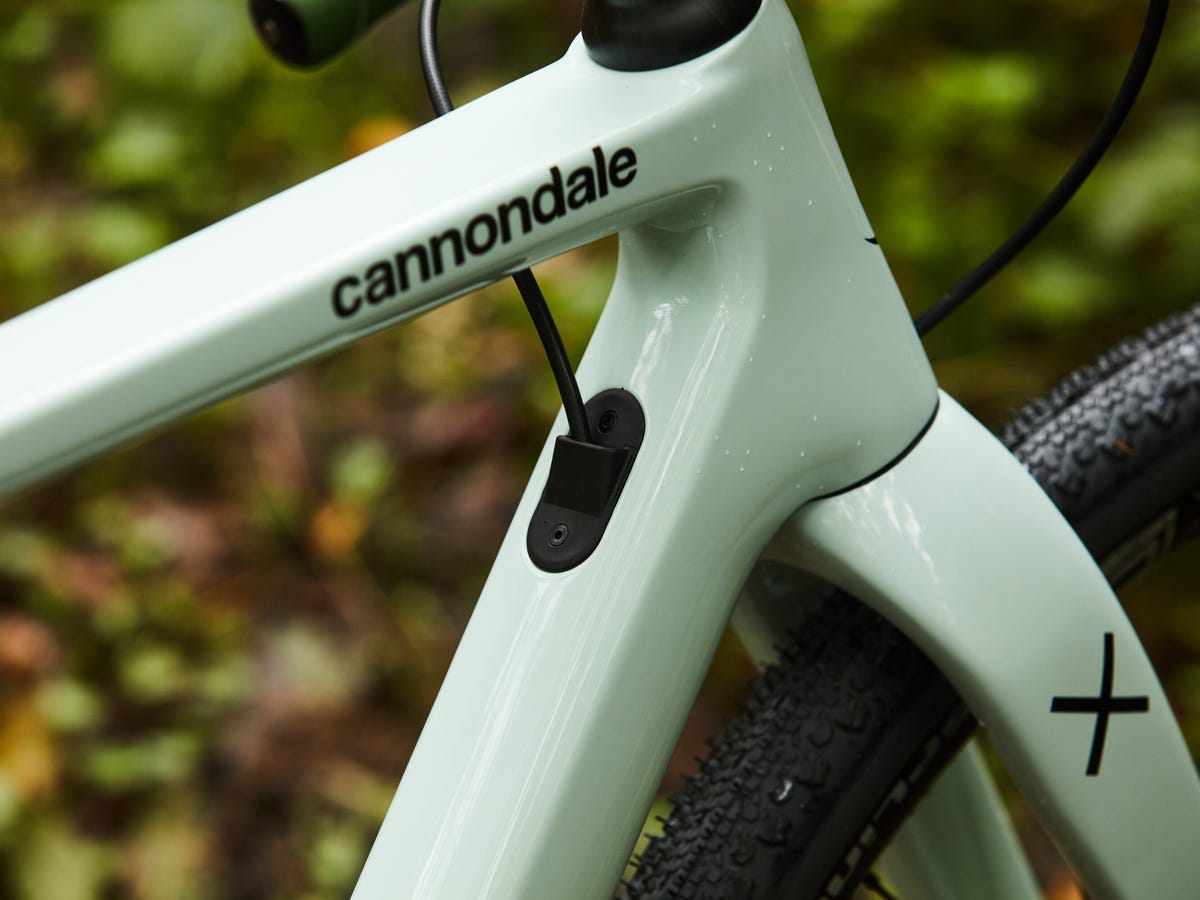
Bike frame geometry and material
When it comes to selecting the right size of my mountain bike, I always make sure to factor in the geometry and material of the frame. The geometry of the frame can greatly affect the handling and control of the bike while riding. For instance, a longer top tube may result in a more stretched-out riding position. As for the material, it can impact the weight and stiffness of the bike. Carbon fiber frames are known for their lightweight and stiffness, while aluminum frames are more affordable but can be heavier. It’s important to consider these factors while choosing a mountain bike size that is perfect for me. [15][16]
Suspension type and travel
When it comes to choosing a mountain bike, one factor to consider is the suspension type and travel. Suspension helps absorb the impact of rough terrain, making your ride smoother and more comfortable. There are two main types of suspension: full suspension and hardtail. Full suspension bikes have shock absorption both in the front and rear, while hardtail bikes only have a front suspension. Travel refers to how much the suspension can compress, which is typically measured in millimeters. The more travel a bike has, the better it can handle rough trails and bigger drops. It also means the bike may be heavier and may not perform as well on smooth terrain. Ultimately, the type of suspension and amount of travel needed depends on your riding style and the terrain you plan on tackling. [17][18]
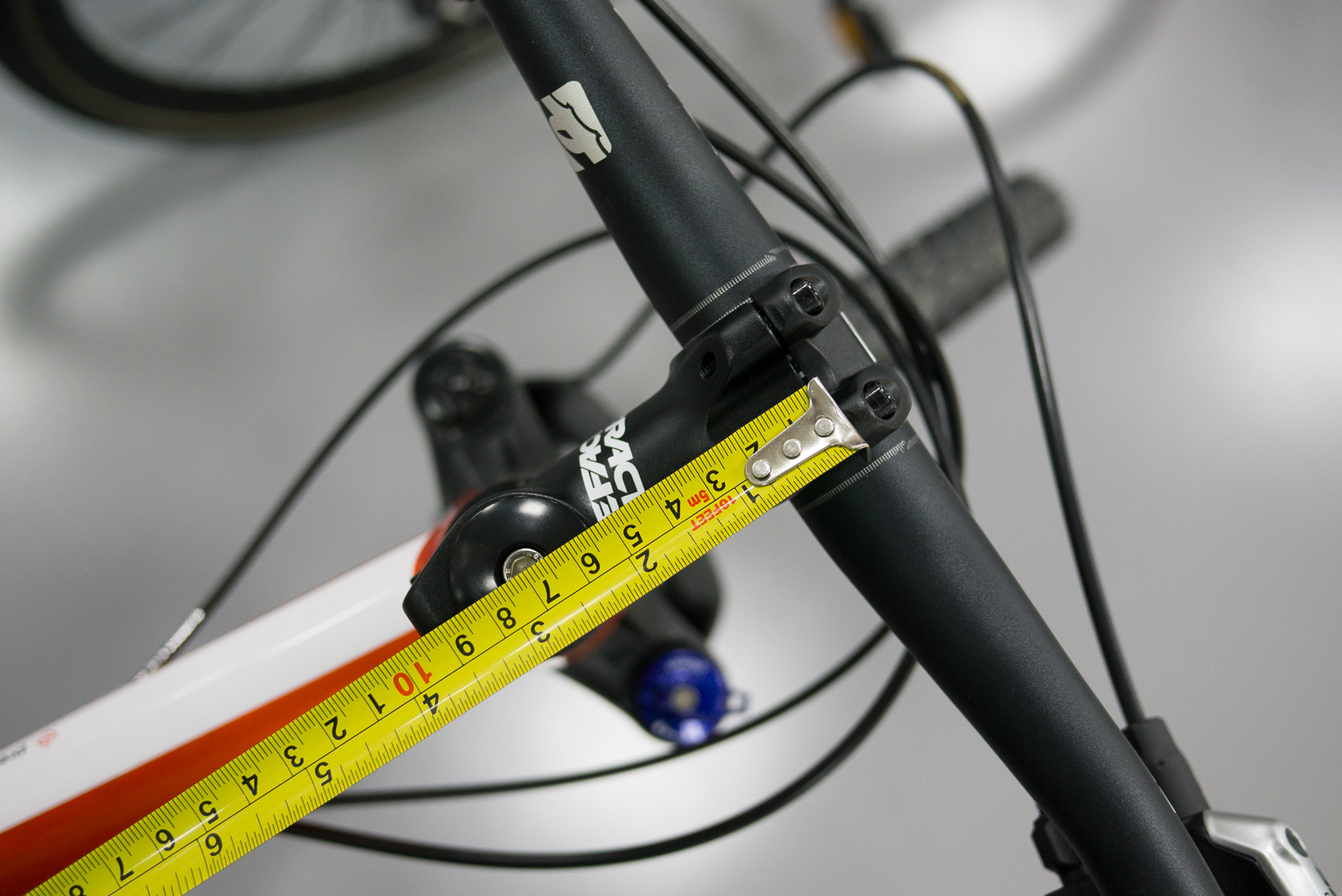
Handlebar and stem length
When it comes to choosing the right size mountain bike, handlebar and stem length are important factors to consider. Depending on your riding style and body geometry, you may need a shorter or longer stem to fine-tune your bike’s fit. For example, a shorter stem can make the handling quicker and more responsive, while a longer stem can improve stability on descents. Similarly, the width of your handlebars can affect your bike’s steering control and overall comfort. It’s important to experiment with different handlebar and stem lengths to find the perfect fit for you. [19][20]
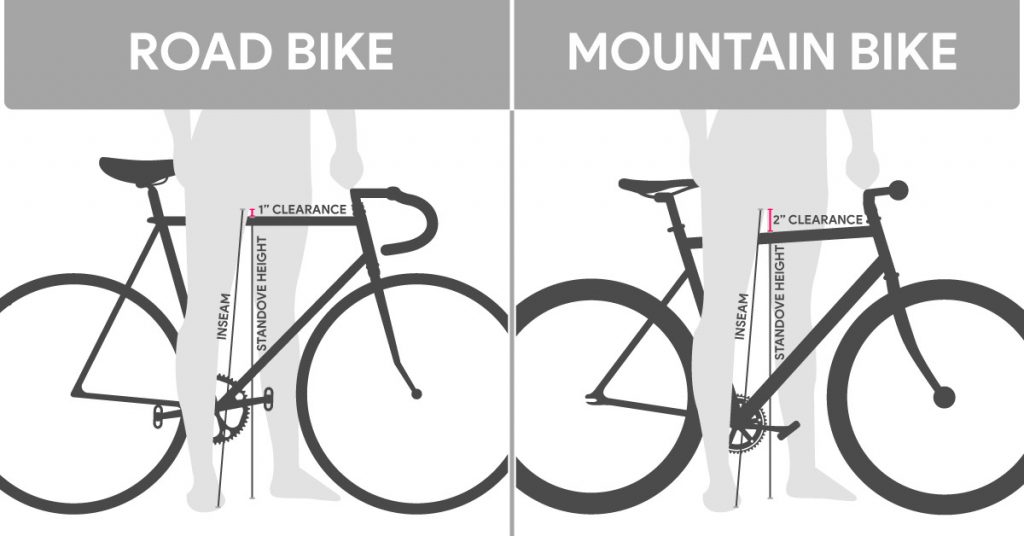
Choosing the Right Size Mountain Bike
When choosing the right size mountain bike, it’s crucial to consider your height, body shape, and riding style. A properly fitted bike can improve your handling and confidence on the trail. It’s best to get the right frame size from the start, and then fine-tune the fit with simple adjustments or component swaps. It’s always wise to test-ride multiple bikes to get immediate feedback about what feels best for you. And remember, within sensible limits, you can adjust your saddle, stem, and handlebars to make a slightly imperfect fit feel fine. [21][22]

Sizing by Brand and Model
When it comes to sizing a mountain bike, it’s important to note that different brands and models have their own size charts and recommendations. That’s why I always make sure to check the chart specific to the brand and model that I am interested in. While the frame size is a good starting point, other factors like geometry, intended use, and skill level should also be considered to ensure a proper fit. It’s always best to do research and check with experts or the manufacturer to make sure you’re getting a bike that’s the right size for you. [23][24]

Overview of how different brands and models size their bikes
When it comes to choosing a mountain bike, it’s important to remember that different brands and models have their own sizing conventions. For example, some brands use T-shirt sizing (S, M, L) based on rider height, while others measure frame sizes in inches or centimeters based on the length of the seat tube. It’s essential to consult the brand’s website for a sizing chart or visit a local bike shop for expert advice on which size is right for you. Remember, a bike that fits properly will ensure comfort and performance, which will enhance your overall enjoyment of the sport. [25][26]

Kids Mountain Bikes
As a parent, I receive numerous emails asking about what size bike is best for kids. It can be tricky to determine the right size bike since kids’ bikes are sized by the diameter of their wheels rather than frame size. However, with a little bit of research, you can figure out the proper size bike for your child without any trial-and-error. The tiniest pedal bikes start with 12-inch wheels, while gradually growing up to 24-inch wheels. Balance bikes usually have 12” or 14” wheels. It’s best to measure your child’s height and inseam and refer to the size chart before making a purchase. [27][28]
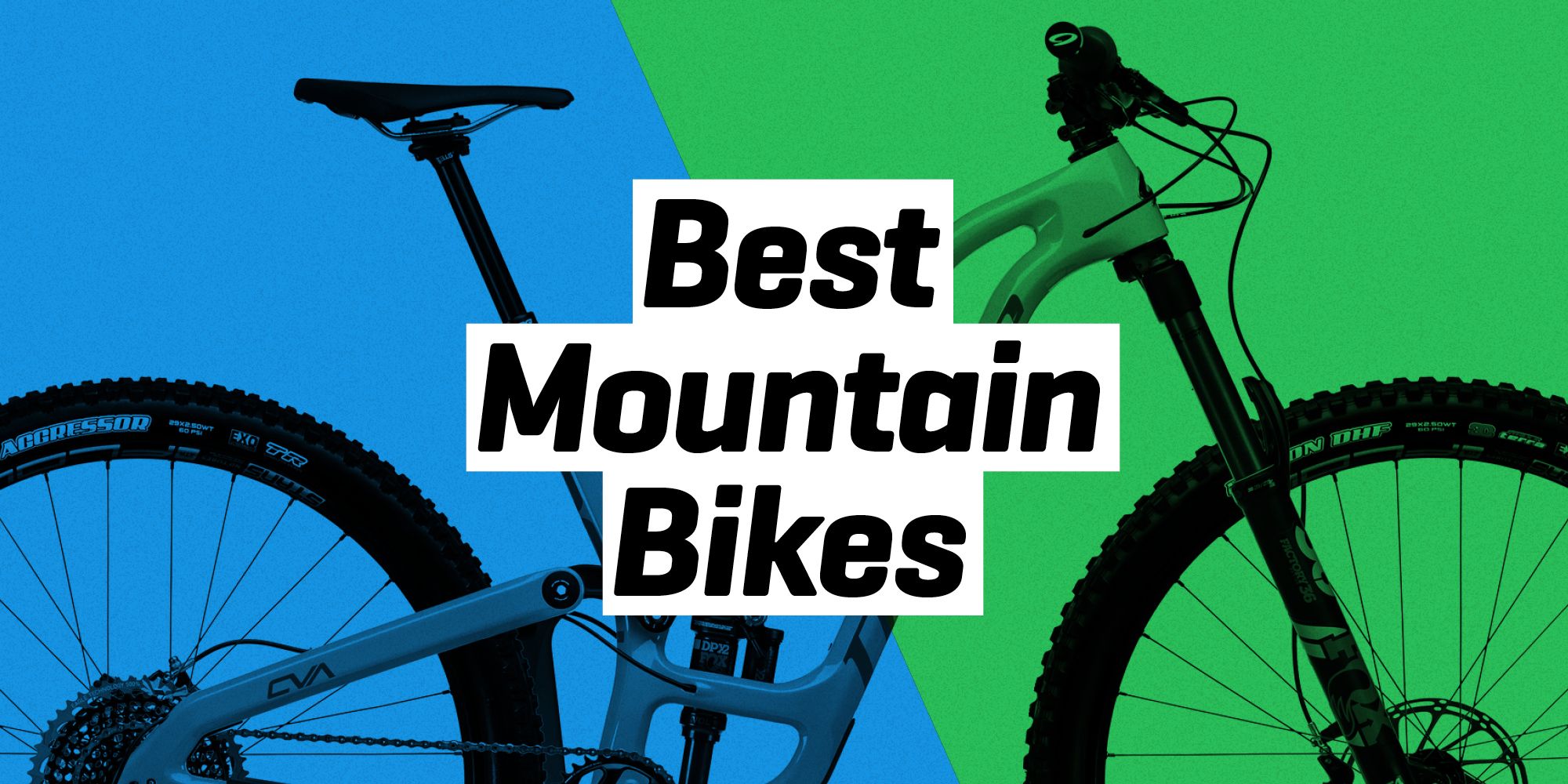
Women’s Mountain Bikes
I love hitting the trails on my mountain bike, but finding the right size can be tricky. Did you know that women’s mountain bikes are often sized differently than men’s bikes? When looking for a women’s mountain bike, it’s important to consider the seat tube length, top tube length, and reach figure. Most mountain bikes are measured in inches and commonly come in sizes like 15″, 17″, and 19″. Some bikes may also use generic sizing like S, M, and L. It’s always a good idea to consult a manufacturer’s sizing chart to ensure you find the perfect fit. [29][30]

Common Mistakes When Choosing Bike Size
One of the most common mistakes when choosing a bike size is relying solely on the listed frame size without considering your own body measurements and riding style. It’s important to understand that not all bikes are the same, even if they have similar measurements on paper. Another mistake is assuming that bigger is always better, as a bike that is too large can be uncomfortable and difficult to control. Don’t be afraid to consult size charts and seek professional fitting advice before making a purchase. [31][32]

Upgrading Your Mountain Bike
If you’re considering upgrading your mountain bike, there are a few things to keep in mind. Firstly, ask yourself why you want to upgrade – is it for a better fit, more performance, or just a change of style? If it’s for a better fit, consider upgrading components such as the stem, handlebars, or saddle. If it’s for more performance, consider upgrading the suspension, drivetrain, or wheels. It’s important to do your research and make sure the components you choose are compatible with your bike’s frame and fork. And remember, upgrading a bike can be just as expensive as buying a new one, so weigh the cost-benefit carefully. [33][34]
Explanation of how to determine whether a new bike is necessary
Before upgrading your mountain bike, it’s important to determine whether a new bike is necessary. One way to assess this is to consider the condition and age of your current bike. If it’s worn out, outdated, or not meeting your needs, upgrading may not be worth it. Additionally, think about your riding goals and the terrain you’ll be tackling. If you need a bike with a different frame geometry or suspension setup, it may be worth investing in a new model. Ultimately, determining whether a new bike is necessary requires considering the lifespan, wear and tear, and fit of your current bike. [35][36]
Overview of how to upgrade components to improve fit and performance
Upgrading components on your mountain bike can greatly improve both fit and performance. As a bike rider, I personally love upgrading my kit to make my rides more enjoyable. Some parts have a bigger impact than others. We recommend dropper posts, saddles, grips, and shoes as great upgrades to start with. It’s important to consider compatibility and sizing before making any upgrades. Whether you’re looking for speed, control, or comfort, upgrading your components can make a big difference in your overall experience on the trails. [37][38]
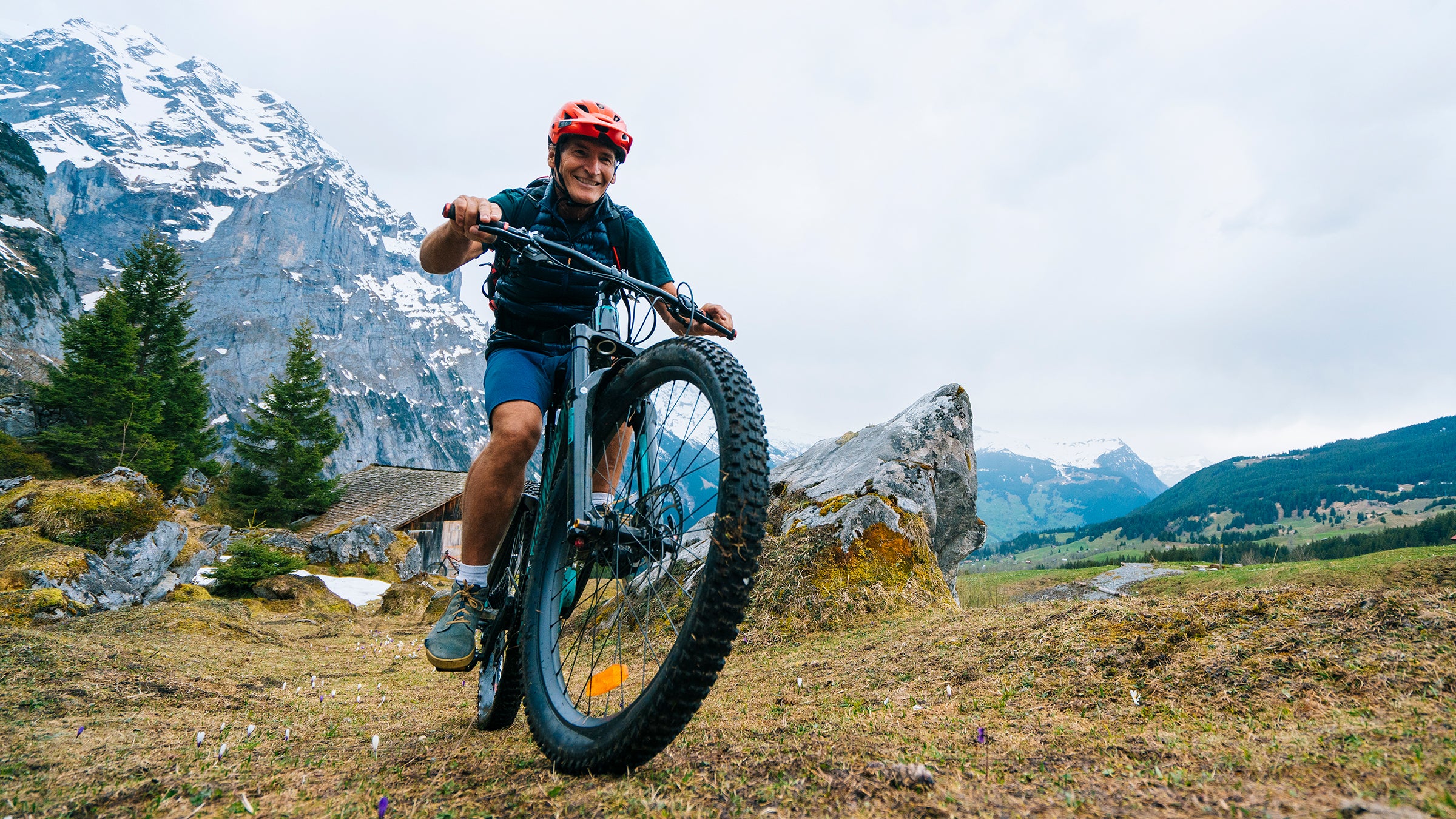
Summary
As someone who loves mountain biking, I know how important it is to have the right size bike. Choosing the correct size can make all the difference in terms of speed, comfort, and control. However, selecting the right size can be daunting, especially with so many factors to consider. That’s why I’ve put together this comprehensive guide to help you understand how to choose the perfect size mountain bike for your body and personal requirements. From understanding frame sizes to adjusting your bike’s components, I’ve got you covered. So let’s dive in and find your perfect fit! [39][40]
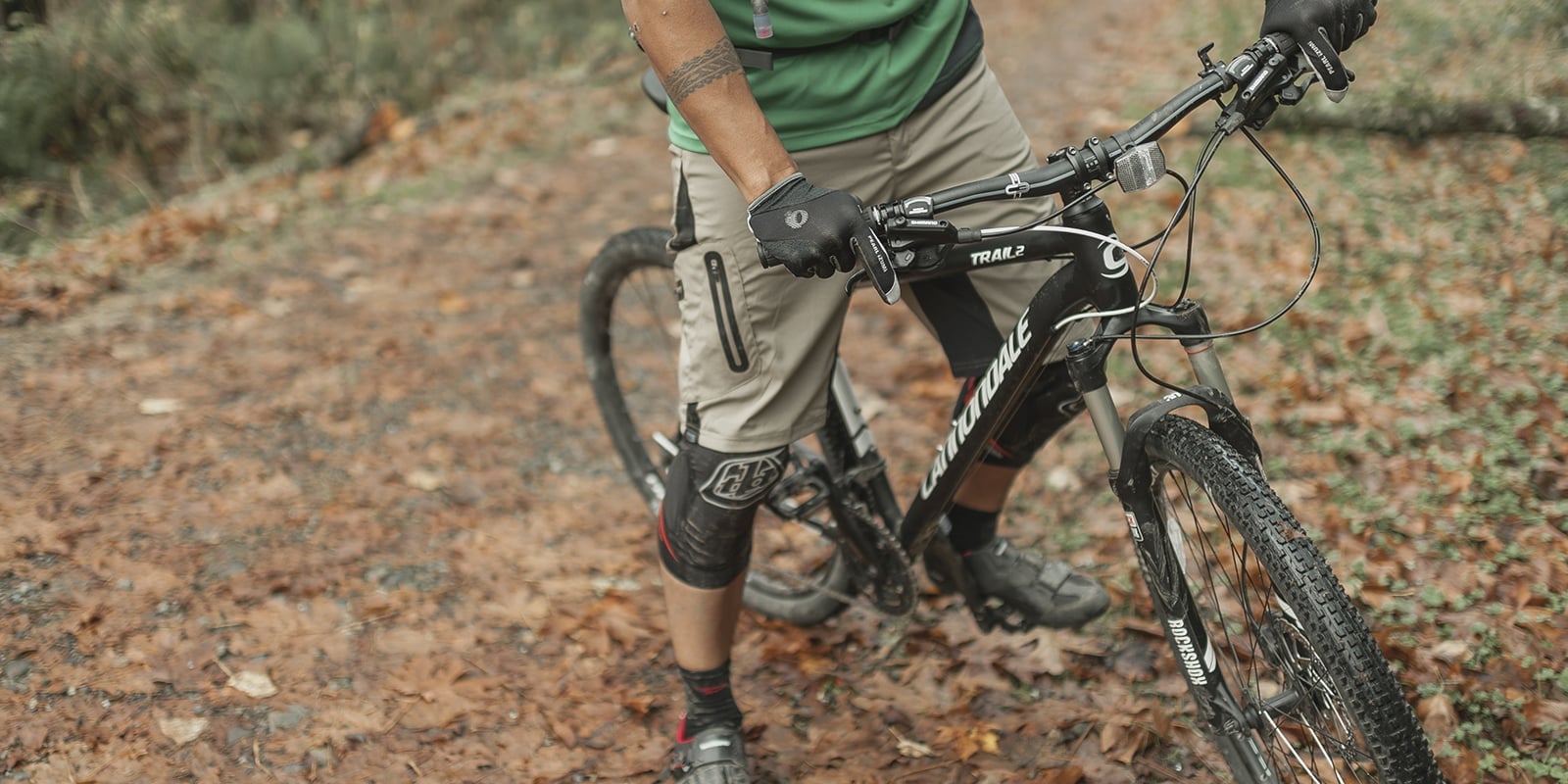
FAQs
As someone who loves mountain biking, I understand the importance of getting the right size bike. Here are some frequently asked questions about choosing a mountain bike size. What happens if you choose the wrong size bike? It can negatively impact your comfort, control, and speed on the trail. Can you adjust the fit of your bike after purchasing it? Yes, there are adjustments you can make to your saddle, stem, and handlebars. What if you are in between sizes? You can size down or up depending on your personal preference and riding style. And don’t worry, you can test ride a bike before purchasing it to ensure it feels right for you. [41][42]
What happens if I choose the wrong size bike?
Choosing the wrong size bike can lead to a host of problems, including discomfort, loss of control, and decreased performance. If the bike is too small, you may feel cramped and unstable, while a bike that is too large can feel unwieldy and difficult to maneuver. Over time, riding a bike that doesn’t fit well can lead to pain and even injury. It’s important to take the time to properly measure yourself and consult size charts to ensure you choose a bike that fits you well and allows you to ride with comfort and confidence. [43][44]

Can I adjust the fit of my bike after purchasing it?
Yes, you can definitely adjust the fit of your bike after purchasing it. In fact, it’s recommended that you fine-tune the fit of your bike once you have the right size by adjusting the existing components such as seat height and seat angle. You can also swap out components to better suit your preferences and riding style. If you’re uncertain about how to make these adjustments, a skilled bike tech or sales associate can help you personalize the fit of your bike. [45][46]
What if I am in between sizes?
If you find yourself in between sizes when choosing a mountain bike, it’s best to go with the smaller option. This is because it’s easier to adjust a slightly smaller bike with components such as the seat and handlebars, rather than a larger bike where it may be difficult to make the necessary adjustments. Plus, a larger bike can make it harder to maneuver and control on the trails. That being said, it’s always recommended to test ride a bike to see how it feels before making a final decision. Remember, a properly sized bike will give you more control and comfort while riding. [47][48]

How do I know if a bike is too small or too big for me?
When it comes to choosing a mountain bike, getting the right size is crucial for a comfortable and safe ride. But how do you know if a bike is too small or too big for you? One way is to sit on the bike with your feet flat on the ground – if there is not enough clearance between the top tube and your body, the bike may be too big. Conversely, if you feel cramped or can’t extend your legs fully, the bike may be too small. It’s also important to consider factors like reach, stack height, and top tube length when determining the right size for you. [49][50]

Can I use a mountain bike for road cycling?
Yes, you can use a mountain bike for road cycling. However, keep in mind that mountain bikes are designed with a different purpose in mind, which makes them less efficient on smooth surfaces. Mountain bikes have wider tires, heavier frames, and more suspension, which can create additional friction and resistance, making road cycling more challenging and slower. If you plan on road cycling frequently, it may be worth investing in a road bike for a more optimal experience. [51][52]
What is the most important factor to consider when choosing a mountain bike size?
When choosing a mountain bike size, the most important factor to consider is your height and body shape. A properly sized bike will give you more control and make riding more comfortable and enjoyable. Manufacturers’ listed frame sizes can be confusing, but it’s important to look at geometry charts to see the bike’s dimensions. You can also use your inseam and reach measurements to calculate the appropriate size. Remember, a bike that’s too small can be uncomfortable and twitchy, while a bike that’s too big can be difficult to control. [53][54]

Can I test ride a bike before purchasing it?
Absolutely! I highly recommend test riding a bike before making a purchase. It’s important to make sure the bike feels comfortable and meets your riding needs. Most bike shops will have demo bikes available for you to test ride. Some shops may even have a rental program where you can test ride a bike for a longer period of time. Take advantage of these options to ensure you get a bike that you’ll enjoy riding and that’s the right size for you. Happy trails! [55][56]
How often should I get a professional bike fitting?
As a professional cyclist, I always recommend getting a professional bike fitting at least once a year. Your body can change over time with age, injuries, and fitness level, and these changes can affect the way you ride your bike. A professional fitting can help you make adjustments to your bike setup for maximum comfort and performance. Additionally, if you’re experiencing discomfort or pain during rides, it may be time for another fitting. Don’t forget that a comfortable bike can help you enjoy your rides more and reduce the risk of injury. [57][58]

What if I can\’t find a mountain bike in my size?
If you can’t find a mountain bike in your size, don’t worry! There are still options available to you. One option is to consider a custom frame or bike build. This may cost more, but it ensures a perfect fit. Another option is to look into alternative brands or models. Some brands may have different sizing options or geometry that could work for you. You could also consider adjusting parts of the bike such as the stem or handlebars to make a slightly imperfect fit feel better. Ultimately, it’s important to prioritize finding a bike that fits well for optimal comfort and control while riding. [59][60]
How much does bike frame material affect sizing?
In my experience, bike frame material can affect sizing in some ways, but it’s not the most crucial factor. For example, a carbon fiber frame may be more forgiving in terms of size as it absorbs more vibrations from the road than an aluminum frame. That said, I’ve found that the geometry of the bike frame is much more important when determining the right size. The length of the top tube, the seat tube angle, and the head tube angle all play a significant role in how a bike fits and handles. So, while frame material is something to consider, I wouldn’t base my decision solely on that. [61][62]